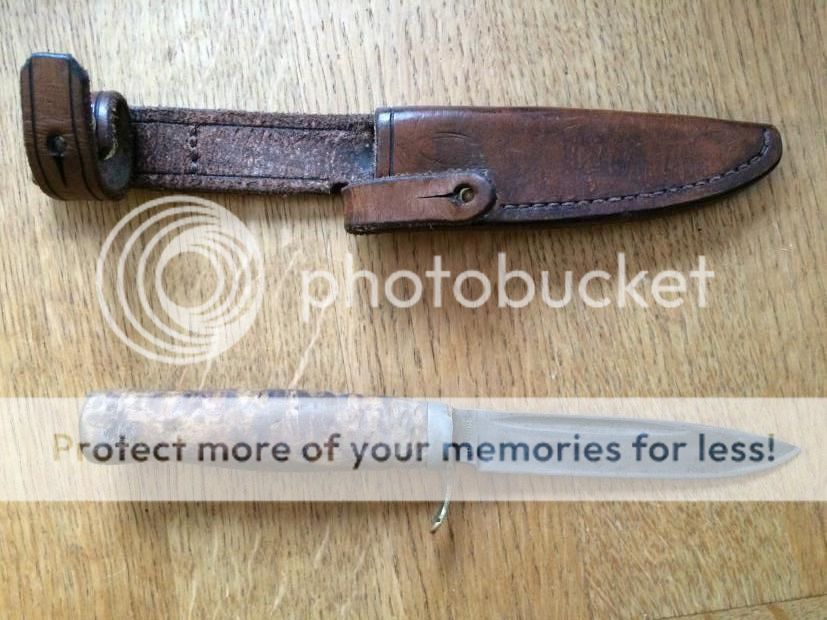kootenay joe
BANNED
- Joined
- Jan 30, 2015
- Messages
- 1,566
I have just purchased a vintage Finnish Puukko with a handle made of stacked rings of Birch bark (very traditional). I do not yet have the knife, only the seller's pictures which show the Birch rings are beginning to separate as though drying out and shrinking ? I have other vintage Puukkos with the same type of handle and the Birch rings are all still tightly packed together so something other than just age has affected the handle.
These are the only pictures i have for now:



Is there any maintenance that will prevent further deterioration or even help the Birch re-hydrate ? ?
Two "?" because i do not know if Birch bark rings are already dry when used to make the handle.
I'm hoping someone has experience with a knife in similar condition.
thanks, kj
These are the only pictures i have for now:



Is there any maintenance that will prevent further deterioration or even help the Birch re-hydrate ? ?
Two "?" because i do not know if Birch bark rings are already dry when used to make the handle.
I'm hoping someone has experience with a knife in similar condition.
thanks, kj

